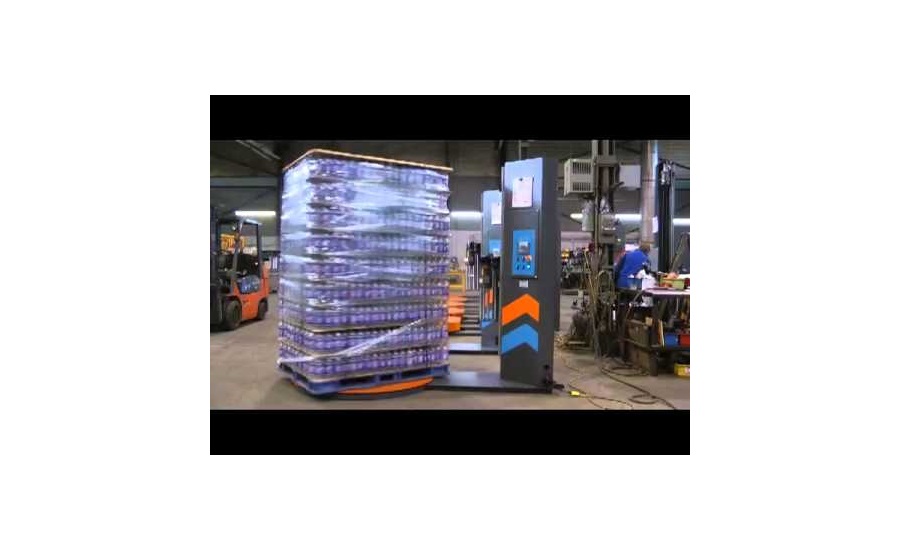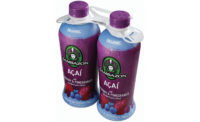Tackling packaging challenges in the beverage industry

Take a look around the refrigerated section of the local convenience store next time you’re there. There’s great variety in the beverage choices: Sodas, ice teas, juices, sport drinks, and bottled water. It’s nice to have so many choices, and it goes to show the growth and strength of the beverage industry in recent years.
As those in the packaging industry (and beverage industry) may have experienced, it doesn’t take long after selecting a drink to think about all the effort that went into getting this bottled beverage to the convenience store. The equipment, the packaging, the logistics, the delivery and so much more go into each bottle.
In my area of expertise – pallet stretch wrappers – I often speak with production line engineers and managers in a variety of different industries, each with their own set of challenges. In terms of end-of-line packaging, the beverage industry has two distinct challenges: high volume production and heavy pallet loads. A beverage distribution center can produce hundreds of pallets per hour and the product is often both heavy and fragile.
Stretch wrappers are one of the key automation elements for the beverage industry. What’s the best type of machine and/or configuration to optimize the end-of-line? Let’s take a look at the options and variables.
High Volume Solutions
If your beverage distribution facility is producing more pallets than your current stretch wrapper can handle, it’s time to consider these options:
Conveyors
One of the ways to add efficiency to the production line is to incorporate conveyors onto the production floor. Timing can make or break a production line and conveyors create a consistent timing mechanism (i.e. it will take the same amount of time for every pallet to get from point A to B). When dealing with high throughput, conveyors can help regulate movement around a warehouse and streamline production line.
Conveyors come in all different sizes, lengths and configurations. Custom solutions are common because of space requirements and specific industry needs. For an optimized production line, consider how conveyors integrated with key machines in a production line could change the output, free up staff and get more done in a single shift.
Faster Automation
There is a vast difference between an entry level automatic stretch wrapper and a high-speed rotary ring stretch wrapper. In some cases upgrading to stretch wrapper with high performance capabilities increase production three-fold, from wrapping 40 loads per hour to 120 loads per hour.
Additional Machines
If adding a faster automated machine isn’t enough for a high production facility – or if the speed doesn’t sync with other areas of the production line – another option is to build a multiple load stretch wrapping system.
This is a tried and true option for our beverage clients, but there are multiple ways to set it up often depending on other elements of the line as well as space limitations. Automatic rotary arm stretch wrappers are often placed in-line and moved via fork lifts. A trio of stretch wrappers can be placed in a triangular configuration. Even conveyorized automatic stretch wrappers could be placed side by side in a warehouse to optimize the wrapping process.
Heavy Loads Solutions
Beverages packaged in glass bottles have both weight and fragility. Both are challenges when it comes to stretch wrapping and preparing a pallet for transport. Finding the right level of strength is a balancing act that consists of the following elements:
Strategic Wrapping
There are automatic stretch wrappers on the market that allow customization of a particular wrap. For example, extra wraps of stretch film at the top and bottom of the pallet add strength to the overall load. A stretch wrapper produces a consistent wrap each and every time – a huge advantage when wrapping in a high volume facility with a fragile product.
Load Retention Strength
Stretch wrappers meet the challenges of wrapping empty PET bottles and (on the other end of the spectrum) a pallet of bricks. Most beverage industry applications fall somewhere in the middle. The versatility of a stretch wrapper lies in how it pre-stretches the film and creates film memory to unitize a load. The amount of film force and where it is applied can be adjusted based on the particular pallet.
Marriage of Film and Equipment
Stretch film is a raw material; without the molecular structure change caused by pre-stretching with a stretch wrapper, stretch film provides little holding power. What that means is a correctly selected film applied using a properly maintained stretch wrapping machine is critical.
If the marriage of the film and the equipment is poor then the resulting film applied to the pallet load will not provide the proper holding force to unitize the load. When looking at your stretch packaging application it is essential to look at the marriage between the film and equipment and to ensure the equipment is creating the required holding power in the film to efficiently complete the job.
There are many types of “marriages” between film and equipment to maximize these efficiencies. Finding the right one for your application is the key. One option – to add versatility to a stretch wrapper – is to invest in a dual carriage stretch wrapper option that combines two types of stretch film creating an extra strong wrap for a pallet.
Final Thoughts
Production lines need to operate like well-oiled machines in order to meet the demands of production. The challenge is there is an infinite number of configurations to get the job done – and many of them would be successful! Finding the right combination for a product, facility and staff is a constant challenge. When considering the challenges of the beverage industry, don’t just look at present production and capabilities, reflect on the future and the overall value of optimizing your stretch wrapping asset.
Graham Nicholson is the sales executive for Phoenix Wrappers (phoenixwrappers.com) and has more than 25 years of experience in the stretch wrapping industry.
Looking for a reprint of this article?
From high-res PDFs to custom plaques, order your copy today!





